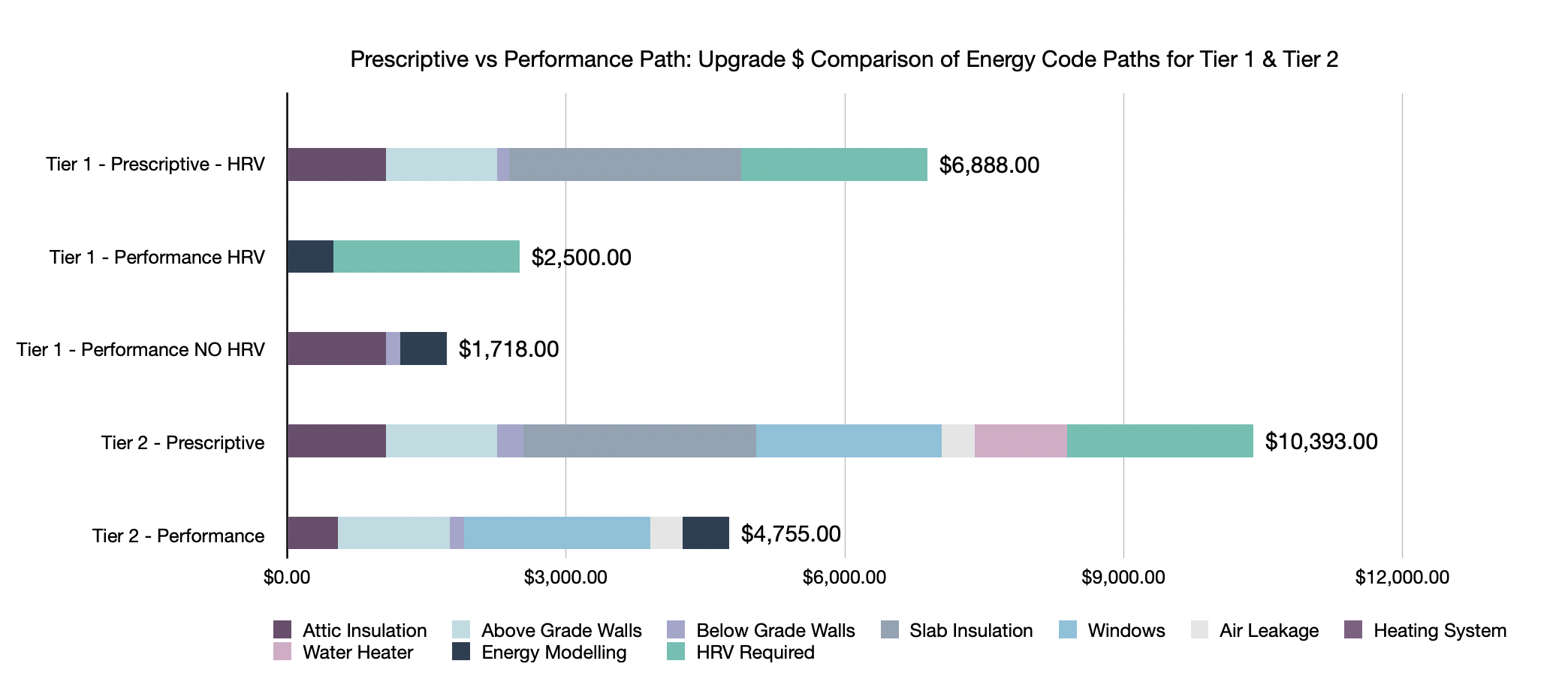Energy Code Hack
You’re ready to pull your building permit, and suddenly the Inspector asks for your energy documents.
Prescriptive? Performance? What now?
Which path is easier? Which one saves you the most money?
How do you know you’re not overbuilding—or worse, missing something critical?
We’ve hacked the energy code, and we’re here to show you the shortcut.
You want the quick answer to the question:
What do I have to do, and how much is this going to cost?
We ran the numbers.
We took a regular house in somewhere, Alberta (or Saskatchewan) and figured out what it would take to comply to NBC2020 Tier 1 AND Tier 2 for both Prescriptive and Performance Pathways.
And guess what?
We can save you up to $5000.
Here’s the data….
What upgrades were considered in our analysis?
We analyzed the upgrade costs for the home based on several key efficiency improvements (this is called optimization):
increasing attic insulation from R40 to R60
upgrading above-grade walls from R20 to R22
improving below-grade walls from R12 to R22
insulating an otherwise uninsulated slab (unheated)
switching from double to triple-pane windows
enhancing air-tightness (including the cost of testing)
adding or omitting an HRV,
upgrading from a conventional hot water tank to an instantaneous system
All of this was assessed alongside energy modelling fees. The results clearly show that, at a minimum, the cost of modelling more than pays for itself—often saving thousands in construction costs under both Tier 1 and Tier 2 pathways.
Remember, we can save you over $5000 at Tier 1 and Tier 2!
Please note that every home is different, and pricing can vary significantly between regions and contractors. This analysis does not include further optimization for rebate eligibility, long-term operating savings, or detailed comfort and durability improvements—all of which can further enhance the value of energy modelling and strategic upgrades.
Design by Whispering Pine Design Studio
Whats the difference between Prescriptive & Performance Paths?
Prescriptive Path:
A checklist-style approach where you follow specific upgrade requirements for each part of the home (e.g., insulation levels, window performance, ventilation). Each component must meet or exceed set minimums, and in NBC 2020, builders must also collect a total of 10 points for Tier 2 from eligible upgrades (like HRVs, better windows, air tightness, or high-efficiency water heaters) to comply.
Performance Path:
Instead of checking boxes, you use energy modelling to show that your home performs as well or better than the prescriptive version. This approach offers flexibility, letting you trade off certain upgrades if overall performance meets the targets. It often results in lower costs and fewer materials, especially when targeting Tier 1 compliance.





